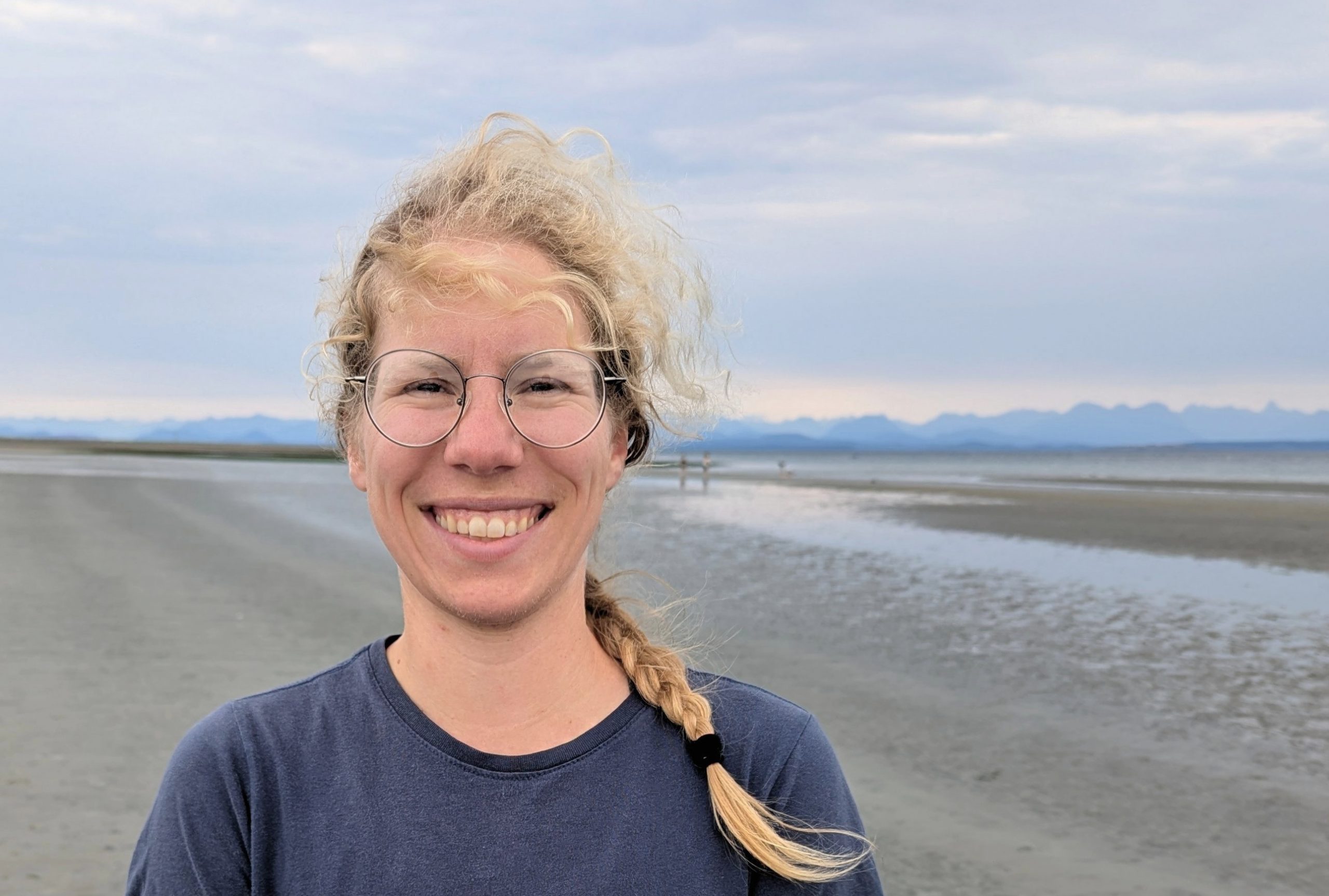Dr Birgit Rogalla
Birgit Rogalla is a physicist turned oceanographer from the flatlands of the Netherlands and the mountains of Canada. Her research interests lie in understanding how humans change the physical dynamics and biogeochemical cycles of the polar regions, with a focus on trace element cycling in the Arctic Ocean and Antarctic ocean-ice shelf interactions. Birgit completed her PhD at the University of British Columbia in 2023 and is now a postdoctoral researcher / ocean-ice modeller at the British Antarctic Survey.
In her postdoctoral work, Birgit uses ocean model simulations to tease apart the contributions of human activities and natural climate variability to the melt of Antarctic ice shelves by the ocean. During her PhD, Birgit modelled trace element concentrations in Inuit Nunangat, a shallow network of channels and islands that transport freshwater and nutrients from the Arctic Ocean to the North Atlantic Ocean. With these models, Birgit looked at what controls the distributions of manganese and lead, which she used both to trace where nutrients from glaciers and rivers end up in the ocean and also to reveal pathways followed by warm Atlantic water towards coastal regions of West Greenland. She enjoys collaborations with observational oceanographers, using models to investigate empirical hypotheses and to extend findings from new observations of iron, anganese, and lead in Inuit Nunangat. While primarily a modeller, Birgit got her feet wet with fieldwork in the Arctic Ocean in 2020, as well as in British Columbia and Chile.
Before oceanography, Birgit dabbled in fluvial geomorphology and experimental cosmology.
Select publications
- Rogalla, B., Allen, S. E., Colombo, M., Myers, P. G., & Orians, K. J. (2023). Continental and glacial runoff fingerprints in the Canadian Arctic Archipelago, the Inuit Nunangat ocean. Journal of Geophysical Research: Biogeosciences, 128(5), e2022JG007072. https://doi.org/10.1029/2022JG007072
- Rogalla, B., Allen, S. E., Colombo, M., Myers, P. G., & Orians, K. J. (2022). Sediments in sea ice drive the Canada Basin surface Mn maximum: insights from an Arctic Mn ocean model. Global Biogeochemical Cycles, 36(8), e2022GB007320. https://doi.org/10.1029/2022GB007320
- Colombo, M., Li, J., Rogalla, B., Allen, S. E., & Maldonado, M. T. (2022). Particulate trace element distributions along the Canadian Arctic GEOTRACES section: shelf-water interactions, advective transport and contrasting biological production. Geochimica et Cosmochimica Acta, 323, 183-201. https://doi.org/10.1016/j.gca.2022.02.013
- Colombo, M., Rogalla, B., Li, J., Allen, S. E., Orians, K. J., & Maldonado, M. T. (2021). Canadian Arctic Archipelago shelf‐ocean interactions: A major iron source to Pacific derived waters transiting to the Atlantic. Global Biogeochemical Cycles, 35(10), e2021GB007058. https://doi.org/10.1029/2021GB007058
- Colombo, M., Rogalla, B., Myers, P. G., Allen, S. E., & Orians, K. J. (2019). Tracing dissolved lead sources in the
Canadian Arctic: Insights from the Canadian GEOTRACES program. ACS Earth and Space Chemistry, 3(7), 1302-1314. https://doi.org/10.1021/acsearthspacechem.9b00083
